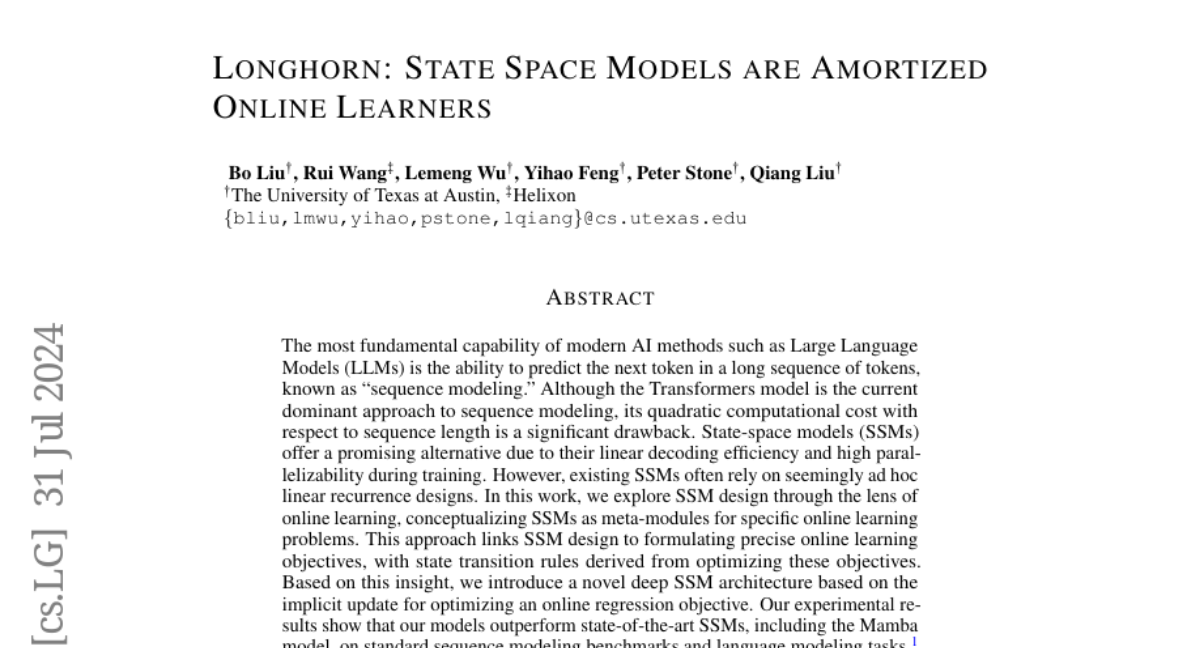Longhorn: State Space Models are Amortized Online Learners
Bo Liu, Rui Wang, Lemeng Wu, Yihao Feng, Peter Stone, Qiang Liu
2024-07-25

Summary
This paper discusses Longhorn, a new approach to improving state-space models (SSMs) for sequence modeling in AI. It focuses on making these models more efficient and effective at learning from data over time, especially in predicting the next part of a sequence.
What's the problem?
Current AI methods, particularly large language models (LLMs), rely heavily on a type of architecture called Transformers, which can be very slow and resource-intensive when dealing with long sequences of data. This quadratic computational cost makes it difficult to scale these models effectively. State-space models (SSMs) are an alternative that can process data more efficiently, but many existing SSMs are not well-designed and do not perform optimally.
What's the solution?
The authors of this paper propose a new way to design SSMs by viewing them as online learners that adapt to new data continuously. They introduce a novel architecture called Longhorn, which optimizes how SSMs update their internal states based on specific learning objectives. This approach allows for faster and more efficient learning, enabling the model to handle longer contexts and improve its performance in various tasks. Experimental results show that Longhorn outperforms other state-of-the-art SSMs on standard benchmarks.
Why it matters?
This research is important because it enhances the capabilities of AI models in processing sequences of data, which is crucial for applications like natural language processing, speech recognition, and more. By improving the efficiency of SSMs, Longhorn can help make AI systems faster and more effective, ultimately leading to better performance in real-world applications.
Abstract
The most fundamental capability of modern AI methods such as Large Language Models (LLMs) is the ability to predict the next token in a long sequence of tokens, known as ``sequence modeling." Although the Transformers model is the current dominant approach to sequence modeling, its quadratic computational cost with respect to sequence length is a significant drawback. State-space models (SSMs) offer a promising alternative due to their linear decoding efficiency and high parallelizability during training. However, existing SSMs often rely on seemingly ad hoc linear recurrence designs. In this work, we explore SSM design through the lens of online learning, conceptualizing SSMs as meta-modules for specific online learning problems. This approach links SSM design to formulating precise online learning objectives, with state transition rules derived from optimizing these objectives. Based on this insight, we introduce a novel deep SSM architecture based on the implicit update for optimizing an online regression objective. Our experimental results show that our models outperform state-of-the-art SSMs, including the Mamba model, on standard sequence modeling benchmarks and language modeling tasks.